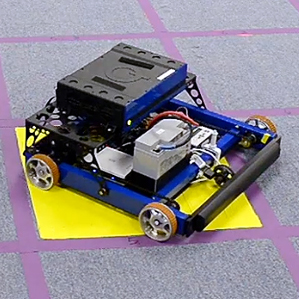Qualcomm
is readying a new kind of artificial brain chip, dubbed neural
processing units (NPUs), modeling human cognition and opening the door
to phones, computers, and robots that could be taught in the same ways
that children learn. The first NPUs are likely to go into production by
2014, CTO Matt Grob confirmed at the MIT Technology Review
EmTech conference, with Qualcomm in talks with companies about using
the specialist chips for artificial vision, more efficient and
contextually-aware smartphones and tablets, and even potentially brain
implants.

According to Grob, the advantage of NPUs over traditional chips like
Qualcomm’s own Snapdragon range will be in how they can be programmed.
Instead of explicitly instructing the chips in how processing should
take place, developers would be able to teach the chips by example.
“This ‘neuromorphic’ hardware
is biologically inspired – a completely different architecture – and
can solve a very different class of problems that conventional
architecture is not good at,” Grob explained of the NPUs. “It really
uses physical structures derived from real neurons – parallel and
distributed.”
As a result, “this is a kind of machine that can learn, and be
programmed without software – be programmed the way you teach your kid”
Grob predicted.
 In fact, Qualcomm already has a learning machine in its labs that uses the same sort of biologically-inspired programming system
that the NPUs will enable. A simple wheeled robot, it’s capable of
rediscovering a goal location after being told just once that it’s
reached the right point.
In fact, Qualcomm already has a learning machine in its labs that uses the same sort of biologically-inspired programming system
that the NPUs will enable. A simple wheeled robot, it’s capable of
rediscovering a goal location after being told just once that it’s
reached the right point.
However it’s not only robots that can learn which will benefit
from the NPUs, Qualcomm says. “We want to make it easier for
researchers to make a part of the brain” Grob said, bringing abilities
like classification and prediction to a new generation of electronics.
That might mean computers
that are better able to filter large quantities of data to suit the
particular needs of the user at any one time, smartphone assistants like
Google Now with supercharged contextual intuition, and autonomous cars
that can dynamically recognize and understand potential perils in the
road ahead.
The first partnerships actually implementing NPUs in that way are
likely to come in 2014, Grob confirmed, with Qualcomm envisaging hugely
parallel arrays of the chips being put into practice to model how humans
might handle complex problems.

 In fact, Qualcomm already has a learning machine in its labs that uses the same sort of biologically-inspired programming
In fact, Qualcomm already has a learning machine in its labs that uses the same sort of biologically-inspired programming 